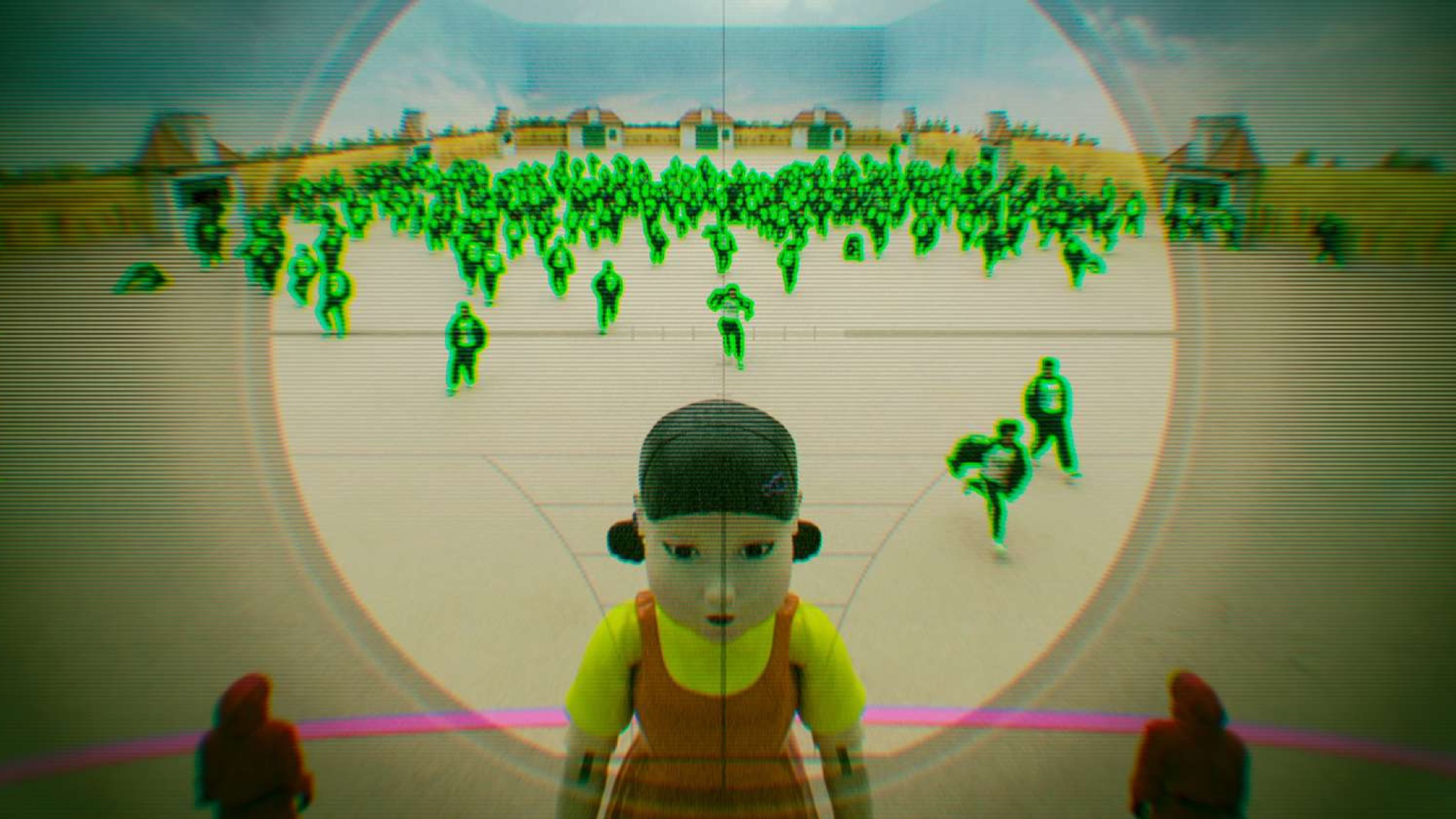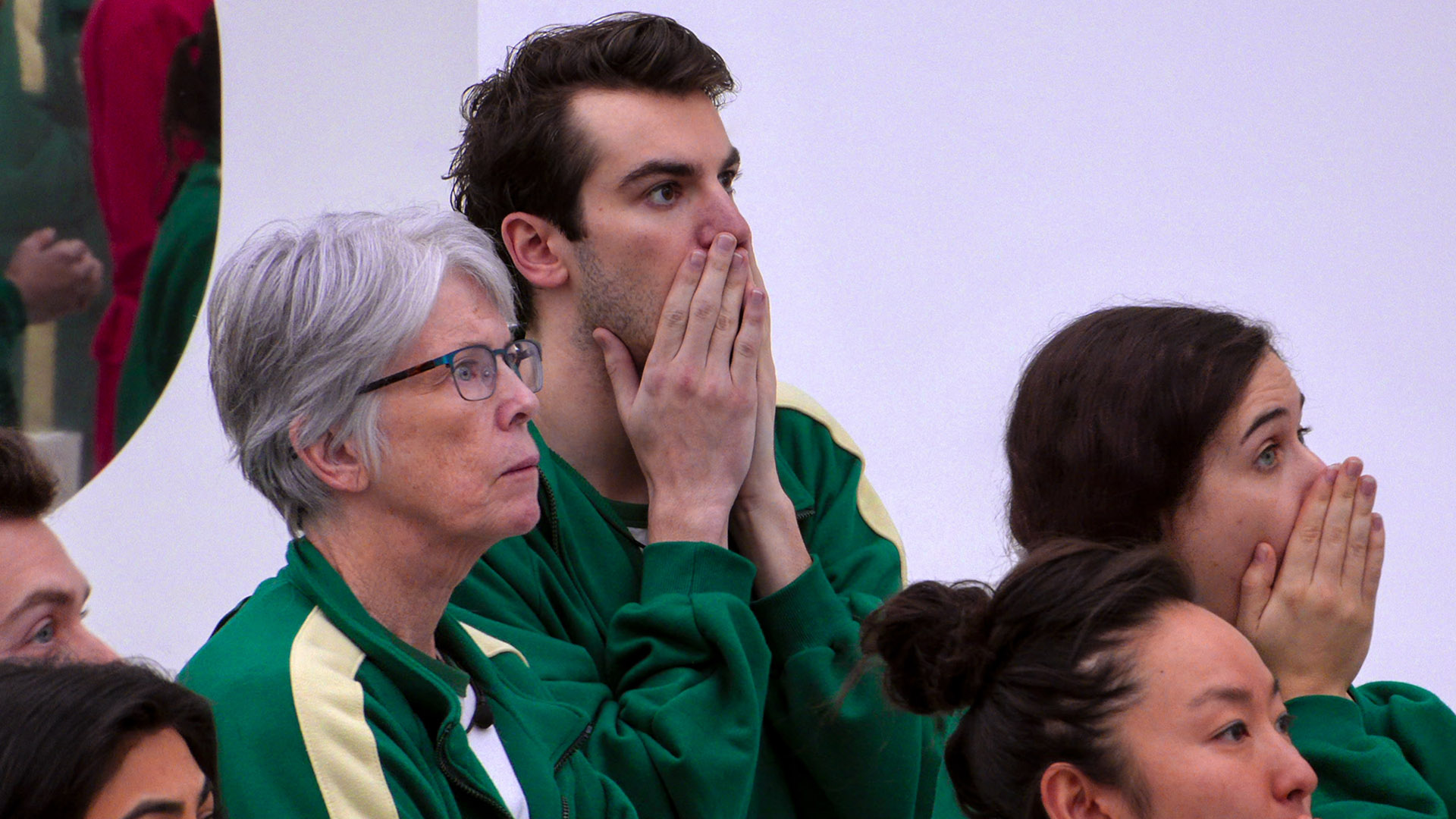
The very first episode of Squid Game: The Challenge – Netflix's real-world version of its hugely popular dystopian cash grab series – features one of the best-known challenges from Squid Game: Red Light Green Light.
For the uninitiated, it's a game where contestants have to evade the gaze of a giant creepy doll Young-hee. In the Hwang Dong-hyuk's wildly successful original Netflix series, if you're caught moving when Young-hee turns around, you're shot and killed. Thankfully, Squid Game: The Challenge's contestants don't have to worry about being executed, but the real-life iteration of the famous game is nonetheless daunting.
However, unlike the original show, which had the benefit of multiple takes to get it perfect, this version had to work perfectly first time for 456 real players, meaning the reality series' creative team had to rise to the challenge. On the screen, the whole set up and execution looks easy. Behind the scenes, though, it was anything but.
How Squid Game: The Challenge brought Red Light, Green Light to life

So, how did the world's best streaming service take Hwang Dong-hyuk's original creation and turn it into a thrilling, real-world game? Speaking to Entertainment Weekly, executive producers John Hay, Toni Ireland, and Stephen Yemoh discussed all of the major problems they had to solve. The first one was finding a space big enough to make the indoor "playground field" that the game would take place in. In the end, they settled on renting a former airship hangar just outside London, which they claim is "the biggest indoor space in Europe".
With a location decided on, the next step was to work out other specifics. How do you judge 456 individual players in real time and do it fairly? As Hay explained, motion tracking by itself – although it was used in the challenge – wasn't enough. "With that amount of prize money at stake, you have to be beyond reproach that you have checked and double checked and got all the right protocols in place to make sure you are beyond any doubt about who has moved when the doll's head is turned."
To make the results challenge-free, the show brought in an army of adjudicators, aka "trained lawyers who were watching the footage and then making sure they knew when people had moved and hadn't moved". To ensure fairness, Netflix added a second camera team to the ones filming the game show, whose job it was to track the players' movements rather than to put them on screen. "It was quite a complicated process," Yemoh says. We don't know about you, dear reader, but that's quite an understatement.
Step onto the set of SQUID GAME: THE CHALLENGE with a behind-the-scenes tour featuring the creator of Squid Game, Hwang Dong-hyuk and special guest Anupam Tripathi! 🦑 #GeekedWeek pic.twitter.com/2TxUwRNFTrNovember 9, 2023
Squid Game: The Challenge might look and sound like a suspense-filled reality series that's full of twists, turns, and metaphorical contestant backstabbings as all 456 participants race to win its $4.56 million cash prize, but it wasn't all good news for best Netflix shows' real-life spin-offs. Indeed, a February 2023 report from Rolling Stone, who interviewed contestants once principal photography ended, suggested the show was "rigged" and that conditions on set were "cruel" and "traumatic".
A separate article from UK newspaper The Sun claimed participants were made to stand in freezing conditions during the series' 'Statues' game, which led to medics being called onto set to attend to those suffering from hypothermia. Yesterday (November 22) – the day Squid Game: The Challenge launched – another Sun article reported that some contestants are going to sue Netflix over the "serious" injuries they suffered during filming. Netflix is yet to comment on the alleged lawsuit.
Squid Game: The Challenge isn't the franchise's only new project that's coming soon. Squid Game season 2 is currently in development, as is a satirical series, which is also being crafted by Dong-hyuk, that'll be based on Squid Game's unprecedented success in 2020.







